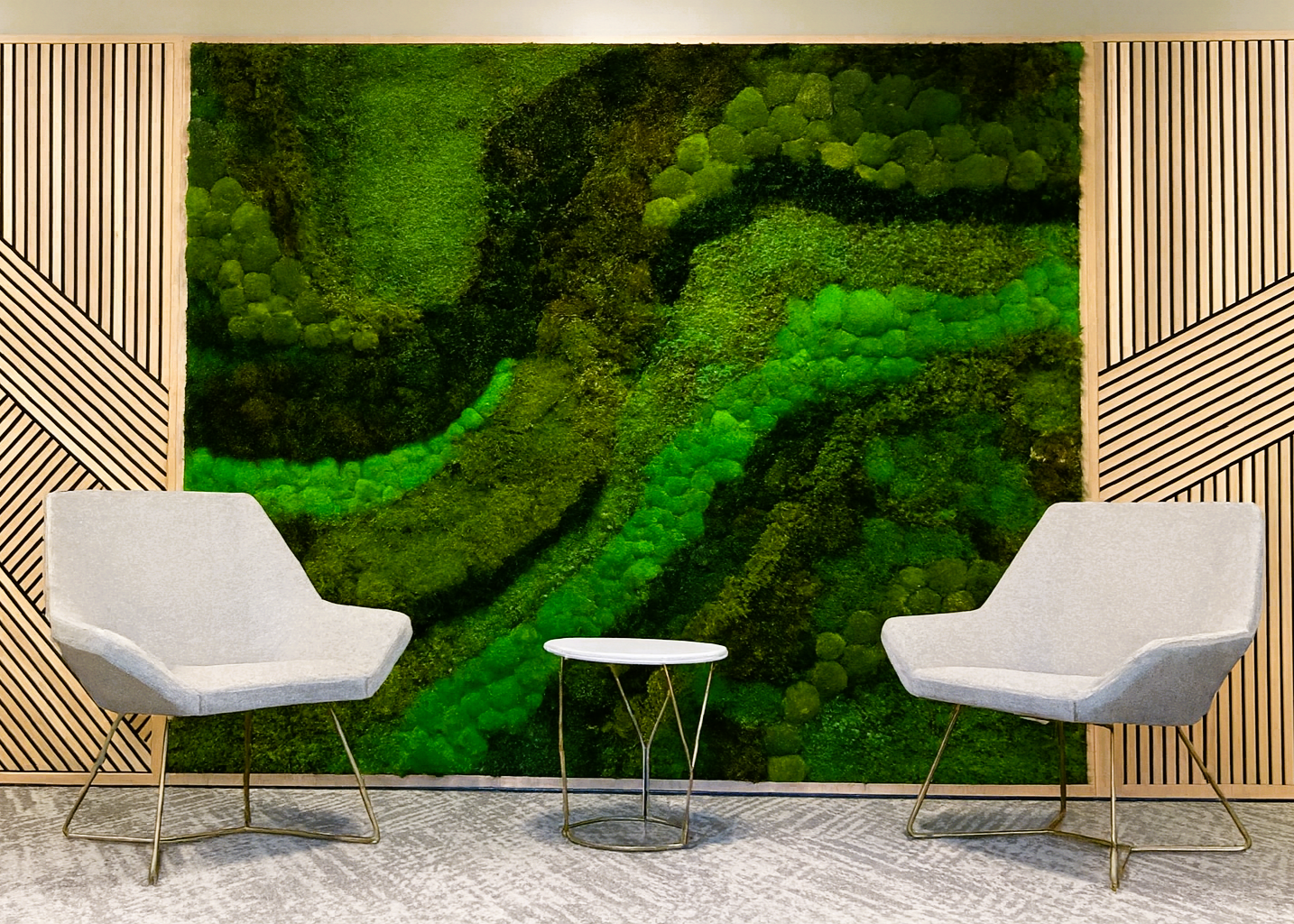Designing for Every Brain: Where Biophilic and Neurodivergent Design Meet
Designing for Comfort, Focus, and Inspiration
In every project, one question always arises:
How can we create environments where everyone feels comfortable, focused, and inspired?
The answer lies at the intersection of two powerful design philosophies — biophilic design and neurodivergent design. Both recognize that the spaces we inhabit directly influence our minds, bodies, and overall well-being. When combined, they form a framework for spaces that are not only beautiful but profoundly supportive of how people think, feel, and perform.
The Science Behind Biophilic Design
Biophilic design connects people with nature — not just visually, but through every sense. Incorporating natural light, greenery, textures, and organic materials has been proven to lower stress, reduce fatigue, and enhance cognitive function.
A well-placed moss wall, for example, isn’t merely decorative. Its texture and color evoke calm, while its ability to absorb sound enhances acoustic comfort. Similarly, natural wood ceilings, plant dividers, and daylight optimization restore mental clarity and help regulate the body’s circadian rhythm.
Designing for Neurodiversity
Neurodivergent design starts with empathy. It recognizes that people experience and process their surroundings differently — especially those with ADHD, autism, dyslexia, or sensory sensitivities.
Designing for neurodiversity means considering:
Sensory zoning — allowing areas for focus, collaboration, and quiet refuge
Adjustable lighting and acoustics — offering individual control where possible
Simplified wayfinding and visual order — reducing overstimulation
Comfortable materials and tactile variety — supporting sensory regulation
By providing choice and flexibility, these spaces foster equity and inclusion — enabling everyone to thrive on their own terms.
Where Nature and Neuroscience Converge
When biophilic and neurodivergent design work together, the result transcends aesthetics. It becomes a tool for mental health, performance, and belonging.
A living plant installation can reduce anxiety; natural textures can ground overstimulated minds; rhythmic lighting can improve concentration for neurodiverse employees. These are not abstract benefits — they are measurable design outcomes that enhance both human well-being and business performance.
At its core, this approach is not about designing for productivity alone — it’s about designing for humanity.
A New Era of Workplace Design
As businesses evolve toward inclusive and wellness-centered environments, biophilic and neurodivergent design principles are quickly moving from “nice-to-have” to “essential.” Forward-thinking organizations understand that healthy, inclusive spaces lead to stronger teams, lower turnover, and greater innovation.
At Insite Licensed Interior Design, we integrate these principles into every project — from concept to completion — ensuring that the built environment actively supports the people who use it.
Ready to Design for Every Brain?
If you’re exploring ways to create workplaces that enhance focus, creativity, and well-being, we can help.
Let’s start a conversation about how nature and neuroscience can shape your next project.

